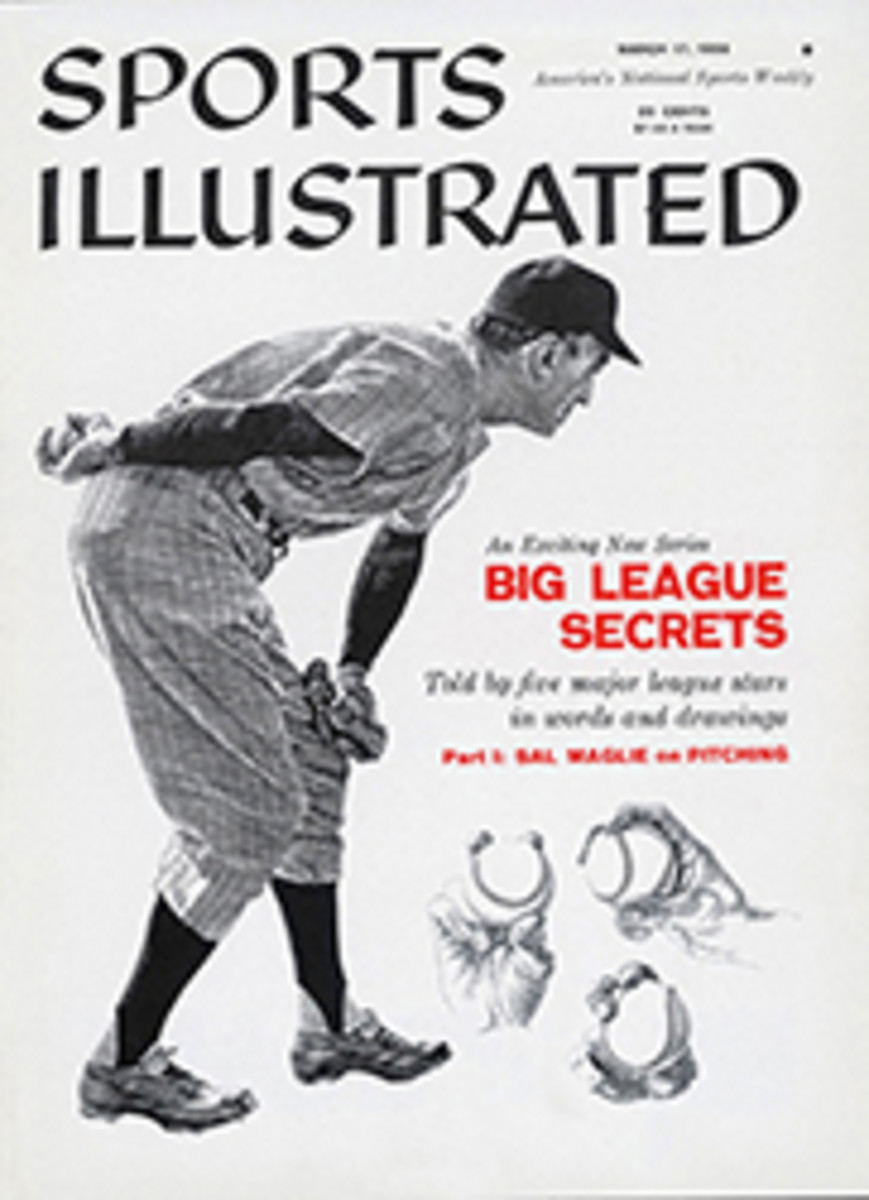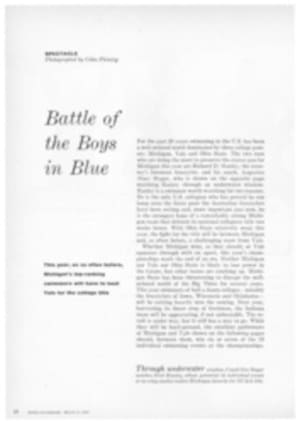
SILKY WOWS THEM ALL
Silky Sullivan won the Santa Anita Derby last week, and thereby established himself as the equine personality-although not yet the greatest horse—of the decade.
This amazing, flame-red chestnut has California in a condition akin to hysteria. He has, in addition to his captivating name, a trait which fascinates horse fans everywhere: he wins his races from behind, and from so "far behind that horsemen and "trainers from coast to coast agree that there may never have been a racer quite like him. In winning the $100,000 added Santa Anita Derby he set himself up as the West Coast's answer to Tim Tam and Jewel's Reward for the Kentucky Derby, for which race he has now been, made favorite in the Caliente Future Book at the ridiculously short price of 2 to 1.
To his old fans (there was a record Derby crowd of 61,123 on hand) this race was strictly a pushover. Silky only got 28 lengths behind in the backstretch (in one of his races he trailed by 41 lengths), and then, instead of looping his field, he cut to the inside, zigzagged through the pack like a sure-footed halfback and won—going away—by 3½ lengths. At the finish he was actually easing himself up, obviously satisfied that he had showed the field who was boss and what was the point of pouring it on. His time was a most creditable 1:49[2/5] (making it the second fastest Santa Anita Derby on record, slower only than the two turned in by Your Host and Determine), and his last quarter of a mile, which usually clicks off in around 23 seconds, was a more normal 24[2/5].
Santa Anita horseplayers will tell you that Silky Sullivan is the greatest horse that ever lived. People who have never seen a race in their lives—even on television—love him dearly.
Least excited about him—in public, anyway—are his two owners and their amiable trainer. Co-owners Tom Ross (a successful lumberman) and Phil Klipstein (a retired cattleman), who went into this partnership about four years ago, are both plagued by heart conditions which haven't exactly improved through watching Silky Sullivan scare the clients with his late finishes. As a matter of fact, Ross had been forbidden to watch Silky run this winter until last Saturday. Their knowledgeable trainer is the California veteran, Reggie Cornell, who has few peers in the mastery of handling a large public stable on the busy, competitive West Coast circuit. Phil Klipstein, now 76, has been associated with race horses for nearly 50 years; he and Ross picked out Silky Sullivan from the Del Mar yearling sales for $10,700 and gave him to Cornell to develop. Looking at the 3-year-old colt today you see a great big, sturdy and well-muscled horse, just about 16 hands, with a tremendously thick neck ("like a Percheron," says Phil Klipstein), and, when you come to think of it, more resembling a solid quarter horse or a 5-year-old stud than a maturing 3-year-old. But Silky is a picture horse nonetheless, with a beautiful sheen to his chestnut coat and a placid disposition. He is always completely relaxed, gentle as can be in or out of his box stall, eats anything he can get close to (except his admirers) and is as tractable as a tired old lead pony.
Trainer Cornell is frank to admit that he has no idea why Silky starts slowly and finishes like a whirlwind. "Maybe he just likes to give his opposition a head start and then nail 'em.
"But the strange thing about Silky (Cornell usually refers to his horse as the Silk Man or just plain Red) is that he always breaks from the gate right with his field and then automatically after going a few yards he'll take himself back without any help from the jock. From there on for the next half mile or so he runs awkwardly and as though he's in some difficulty. Suddenly he'll shift into high gear and really flatten out. From there on (it's usually about the three-eighths pole) I've never seen a horse in my life—or heard of one either—go faster."
Most other horsemen who have watched and studied Silky Sullivan's action in his races believe he must, in some way, be a freak. His trouble, say some, just has to be a physical disability in either his respiratory, circulatory or digestive apparatus. "Something," says one oldtimer, "must be hurting this colt so that he takes himself back for the first part of it. You think of an automobile engine that sounds and acts rough when you first turn on the motor. Only after it warms up does it run smooth. With Silky maybe he's hurting somewhere when he suddenly starts to exercise violently, but after he goes a while his action shifts from that rough awkward movement into a smooth and beautiful one. Like a distance runner, maybe, who can go nowhere until he gets his second wind." The theory of a respiratory defect also gains credence from the fact that, working a mile the other morning, he passed the finish line roaring like a diesel express. "If he were genuinely winded, though," says Cornell, "he could never run like this and run this far. There must be more to it than that."
Whatever Silky Sullivan does from here on, he is already a national hero, and, as Arcaro points out, "If there was to be a popularity contest among horses right now, this sucker would clean up 3 to 1." Silky's sire, Sullivan, although he won over sprinters at Hollywood Park at distances up to a mile and a sixteenth, is not renowned as an example of staying blood. There is a bit more evidence of stamina on the dam's side, but if Silky goes much further than Saturday's mile-and-an-eighth Derby he'll be tripping more than lightly over his own pedigree. The horses he beat were, for the most part, not top-drawer. His most formidable rival, Old Pueblo, is a colt who should concentrate on sprints from now on and can be discounted as a distance threat.
Silky Sullivan, hero that he is, has a tough road ahead in hoping to be the next Santa Anita Derby winner to take the Kentucky Derby. The big question now was put clearly by Eddie Arcaro last week. "The important thing to remember," says the man who has won more Kentucky Derbies than any other jockey, "is that Silky Sullivan has been making up 35 and 40 lengths on ordinary horses. What's he going to do when he tries to give away all that ground to top colts and then nail them in the stretch? If he can do it to a good horse like some of those Florida colts, Tim Tam and Jewel's Reward, then he's got to be good. Not only good but real good."
Silky is going to get just that opportunity. His next stop: the Florida Derby at Gulfstream Park on March 29, and then on to Keeneland and Churchill Downs for the big one. Do his connections think he has a chance? "Listen," says a jubilant Reggie Cornell, "the last time I saw Bill Corum I told him I wouldn't come back to Churchill Downs until I had a horse that would get me over there into his winner's circle. Now I'm ready to go back."
[originallink:10482151:41628]
PHOTO
THE SILK MAN COCKS A ROGUISH EYE AT ALL COMERS

